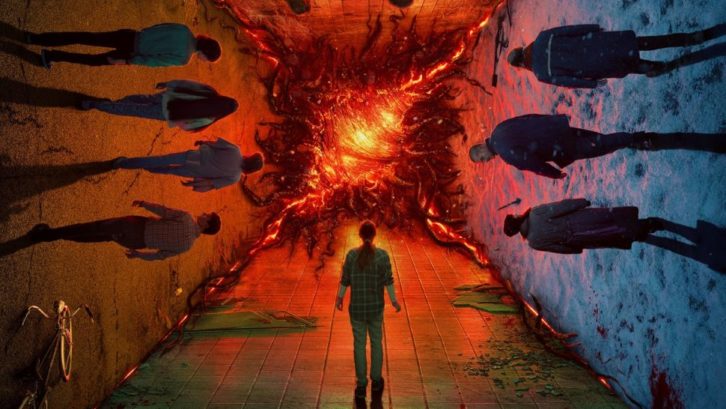
Netflix recently made news for something aside from its plunging subscriber base or more positive developments like the success of Stranger Things season 4: the addition of Spatial Audio to select shows on its platform.
Similar to the Spatial Audio tracks on streaming services like Apple Music, Netflix Spatial Audio aims to provide a realistic sense of immersion, one that can bring scenes to life when watching shows and movies using headphones like the AirPods Pro or other models. But Spatial Audio support on Netflix isn’t just limited to headphones; it can be experienced with desktop computer speakers, or even just the plain old speakers built into your laptop computer or TV.
The service’s full library of Spatial Audio offerings can be browsed by typing “spatial audio” into the search bar on the main Netflix screen, and it includes shows like Stranger Things, The Witcher, The Haunting of Bly Manor, and more.
Netflix and Sennheiser AMBEO 2-Channel
Netflix delivers its Spatial Audio offerings using AMBEO 2-Channel, a technology it licenses from Sennheiser that lets sound mixers adapt Dolby Atmos soundtracks for Spatial Audio presentation over stereo speakers.
The AMBEO 2-Channel process offers full control over the spatial effect applied to each channel in the soundtrack, allowing for dialogue and music tracks to remain untouched. And since the sound mixer gets to monitor and compare the new version with the regular Dolby Atmos one, it can be adjusted with “patented granular control of the spatialization, ranging from full AMBEO effect to standard stereo mixdown,” according to Sennheiser’s description of the technology.
Ears-on comparison with Dolby Atmos
Seizing the opportunity to join the rest of the world in watching Stranger Things season 4, I cued up episode 1 on my laptop and started watching with Audioengine A2+ speakers, the top option in our best computer speakers guide, handling Netflix Spatial Audio duties.
The sound was surprisingly big for such small desktop speakers, with a good amount of surround effect coming from the sides and a height dimension that reached well above my computer’s screen. Impressive!
Shifting the test over to my 5.1.2 Dolby Atmos home theater system, which consists of Polk Audio Reserve speakers and a Marantz SR6014 A/V receiver, I cued up the same Stranger Things scenes in the Netflix app on my Apple TV 4K. To make a comparison between the Spatial Audio version and the regular Dolby Atmos one, I manually switched between a 2-channel and 5.1.2-channel speaker configuration in the Marantz receiver’s setup menu.

Once again, I was impressed with how large and life-like the Spatial Audio version sounded coming from just the 2 front speakers. There was no loss of bass or dialogue clarity, and the sense of a height dimension was strong. When I switched over to the Atmos presentation with surround and overhead effects speakers engaged, I experienced a much better sense of immersion, but the Netflix version held up surprisingly well in the comparison.
As a reality check, I watched some scenes from Dunkirk, a movie on Netflix with a regular 5.1 soundtrack and no Spatial Audio. The surround sound played over my 5.1.2-channel speaker setup was as good as I expected it to be. But when listened to with just the 2 front speakers, the presentation was comparatively flat, with none of the immersive qualities I had experienced with Netflix Spatial Audio.
Is Netflix Spatial Audio the real deal?
Surprisingly, yes. While Netflix is mainly aiming its Spatial Audio offerings at headphones users who watch on a laptop computer or tablet, it works really well on desktop computer speakers, and also on regular hi-fi ones.
Of course, if you have a Dolby Atmos system, you’ll want to set things up so you’re getting the full experience and not the downmixed one with Spatial Audio added. But it’s good to know that Netflix Spatial Audio can hold its own on more capable speakers, and that the company isn’t putting the format out there as a silly gimmick.
This article originally appeared on techradar.com
About the Author
Al Griffin has been writing about and reviewing A/V tech since the days LaserDiscs roamed the earth, and was previously the editor of Sound & Vision magazine. When not reviewing the latest and greatest gear or watching movies at home, he can usually be found out and about on a bike.
See also: PSB Announces 50th Anniversary Edition Passif Standmount Speaker












